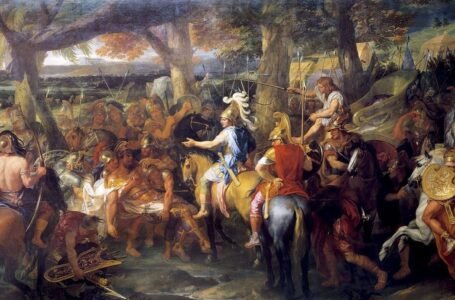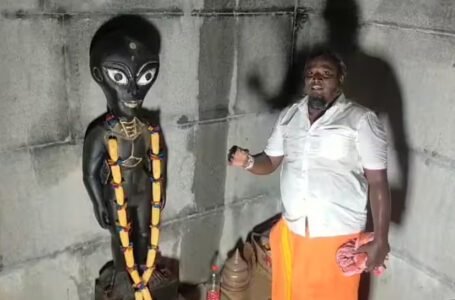Koli Dance: A Cultural Symphony of Maharashtra’s Fisherfolk

The Koli dance, originating from the vibrant Koli fishing community of Maharashtra, is more than just a folk performance; it is a celebration of life, culture, and tradition. This lively and rhythmic dance form has been passed down through generations, reflecting the community’s close ties with the sea and its fishing heritage. Known for its captivating energy and vibrant visuals, the Koli dance has evolved into an iconic representation of Maharashtra’s cultural tapestry.
Origins: A Dance Born from the Waves
The Koli community, primarily residing along the western coastline of India, is one of the oldest fishing communities in the country. Deeply connected to the Arabian Sea, the Kolis have developed a way of life and art that mirrors their profession and surroundings. The Koli dance is believed to have originated as a way to celebrate the bounty of the sea, offering thanks for a good catch and marking significant occasions in the community.
The name “Koli” Itself is derived from the community’s profession, as they are known as traditional fisherfolk. The dance embodies the rhythmic ebb and flow of the sea, with movements symbolizing rowing boats, casting fishing nets, and navigating through the waves. It is a testament to the Kolis’ resilience and harmony with nature, celebrating their livelihood through artistic expression.
Performance Style: An Ode to the Sea
The Koli dance is typically performed in groups, with both men and women participating. The men often hold oars to depict rowing movements, while the women join hands, symbolizing the supportive role of the community. Divided into two groups, the dancers synchronize their movements to portray various aspects of fishing life, such as casting nets, pulling in the catch, and navigating turbulent waters.
Key Features of the Koli Dance:
- Symbolic Movements: The dance captures the essence of the sea through fluid, wave-like motions and the simulated act of rowing.
- Dynamic Formations: Dancers often alternate between separate male and female formations and united group performances, representing the unity and teamwork essential to their profession.
- Traditional Costumes: The dancers don colorful attire, with women wearing traditional sarees draped in a Maharashtrian style and men sporting dhotis and kurtas. The costumes often feature nautical colors like blue and white, reflecting their marine connection.
- Instruments and Music: Traditional instruments such as the dhol, tasha, and lezim provide the rhythmic beats, while folk songs narrate tales of the sea and fishing adventures.
Cultural Significance: More Than Just a Dance
The Koli dance is deeply intertwined with the community’s identity and traditions. Performed during festivals, weddings, and community gatherings, it serves as a medium to bring people together, fostering a sense of unity and shared heritage.
Connection to Festivals:
The dance is an integral part of celebrations such as Narali Purnima, a festival marking the end of the monsoon season and the resumption of fishing activities. On this occasion, the Koli community offers coconuts to the sea as a token of gratitude and seeks blessings for a prosperous fishing season. The dance becomes a jubilant expression of hope and gratitude during these festivities.
Preserving Oral Traditions:
The songs accompanying the Koli dance often narrate stories of the community’s history, legends, and daily struggles. These oral traditions play a crucial role in preserving the cultural heritage and passing it on to future generations.
The Evolution of Koli Dance: From Tradition to Modernity
While the Koli dance remains rooted in its traditional form, it has undergone significant transformations over the years. Modern adaptations have introduced stylized versions of the dance, often performed at cultural festivals, tourism events, and on international platforms.
Tourism and Global Reach:
The picturesque and energetic Koli dance has become a major attraction at Maharashtra’s cultural showcases. Events like the Kala Ghoda Arts Festival in Mumbai and the Elephanta Festival feature Koli performances, introducing this vibrant art form to a global audience.
Influence on Cinema and Pop Culture:
The charm of the Koli dance has also found its way into Bollywood. Films like Amar Akbar Anthony and Malaal have showcased the dance, making it a recognizable symbol of Mumbai’s coastal culture. Additionally, its rhythmic beats and dynamic movements have inspired choreographers to incorporate Koli elements into contemporary dance performances.
Challenges and Preservation Efforts
Despite its popularity, the Koli dance faces challenges in maintaining its traditional essence. Urbanization, changing lifestyles, and the pressures of modernization have impacted the Koli community’s way of life. Many traditional practices, including the authentic forms of Koli dance, are at risk of fading away.
Key Challenges:
- Loss of Traditional Knowledge: Younger generations are increasingly moving away from traditional occupations and practices, leading to a decline in the transmission of cultural knowledge.
- Commercialization: The stylization of the Koli dance for tourism and entertainment often dilutes its cultural authenticity.
- Environmental Impact: Overfishing and pollution have adversely affected the Koli community’s livelihood, indirectly impacting their cultural expressions.
Preservation Initiatives:
To address these challenges, various efforts have been undertaken to preserve the Koli dance and its associated traditions:
Cultural Festivals: Local government bodies and cultural organizations regularly organize events to promote traditional Koli performances.
Workshops and Training: Community-led workshops aim to teach the younger generation the traditional dance forms and their significance.
Documentation and Research: Efforts to document Koli dance through films, books, and academic research help preserve its history and ensure its legacy.
The Future of Koli Dance
As the Koli dance continues to evolve, it holds the potential to bridge tradition and modernity. By embracing innovation while staying true to its roots, this dance form can remain relevant in an ever-changing world. The Koli community’s resilience and adaptability are reflected in their art, ensuring that their cultural identity thrives despite the challenges they face.
Steps Towards a Sustainable Future:
- Community Empowerment: Supporting the Koli community’s cultural and economic well-being is crucial to preserving their traditions.
- Cultural Exchange: Promoting the Koli dance on international platforms can foster a greater appreciation for its uniqueness and encourage cross-cultural dialogue.
- Integration with Education: Introducing folk arts like the Koli dance into school curriculums can help instill pride in India’s cultural heritage among young learners.
Conclusion: A Dance That Echoes the Spirit of the Sea
The Koli dance is more than just a performance; it is a vibrant reflection of the Koli community’s connection to the sea, their resilience, and their joyous spirit. Through its rhythmic movements and traditional melodies, the dance tells stories of life on the coast, weaving together the past and the present. As efforts to preserve and promote this folk art continue, the Koli dance stands as a symbol of Maharashtra’s rich cultural heritage, inspiring generations to celebrate their roots while embracing the future.


